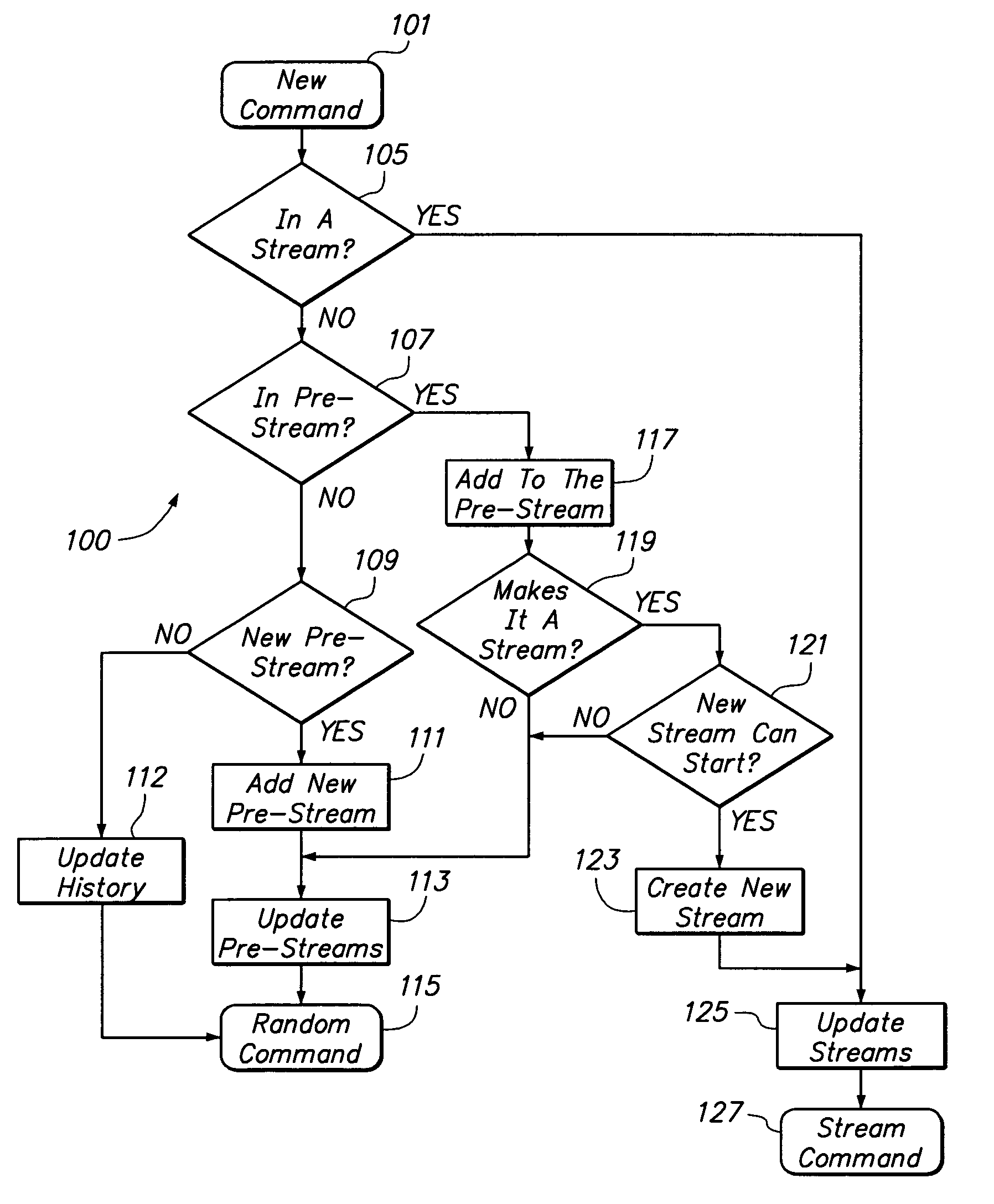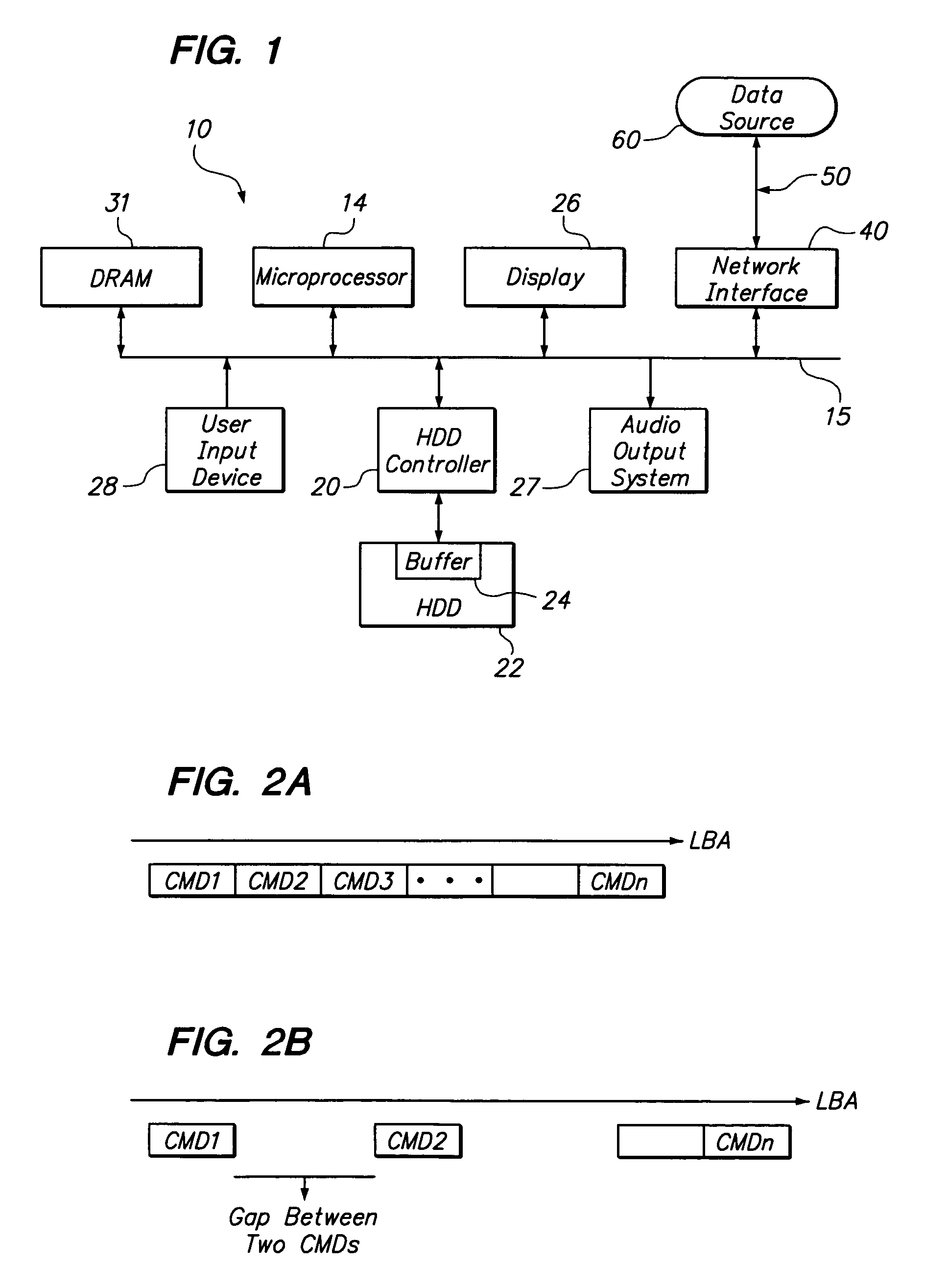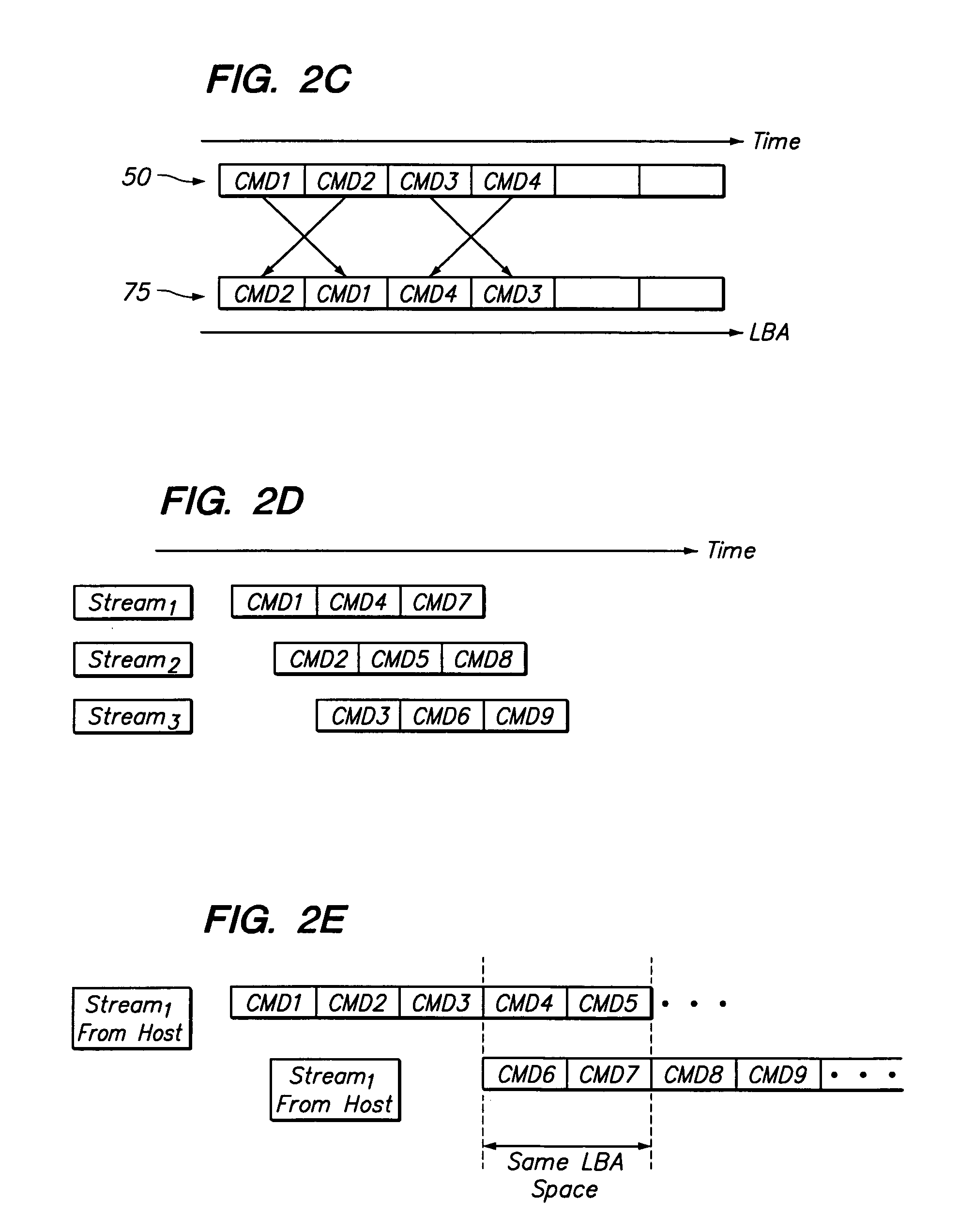Method and apparatus for detection and management of data streams
a data stream and data management technology, applied in the field of digital data storage and retrieval, can solve the problems of not being able to handle multiple data streams well, unable to retrieve and display multiple data streams at the same time, and unable to achieve the success of multiple data streams management, etc., to achieve the effect of increasing the number of data streams that can be supported, increasing performance, and increasing the number of concurrent data streams
- Summary
- Abstract
- Description
- Claims
- Application Information
AI Technical Summary
Benefits of technology
Problems solved by technology
Method used
Image
Examples
Embodiment Construction
[0041]One possible embodiment of a system incorporating the present invention is illustrated in FIG. 1. System 10, shown in FIG. 1, is comprised of bus 15, to which are coupled microprocessor 14, data display 26, user input device 28, audio output system 27, Dynamic Random Access Memory (DRAM) 31, network interface 40 and hard disk drive (HDD) controller 20. In turn, HDD controller 20 is coupled to HDD 22, which has internal read / write memory buffers 24. Typically, memory buffers 24 will be formed from a known semiconductor memory such as dynamic random access memory (DRAM). Memory buffer 24 temporarily stores data that is either being written or read from the HDD. With respect to the present invention, the construction of HDD 22 and memory buffers 24 is known in the art. Network interface 40 can be comprised of any known network connection system including a dial-up modem, Ethernet, etc. Through the network interface 40, system 10 can be coupled through to a network 50 such as an i...
PUM
 Login to View More
Login to View More Abstract
Description
Claims
Application Information
 Login to View More
Login to View More - R&D
- Intellectual Property
- Life Sciences
- Materials
- Tech Scout
- Unparalleled Data Quality
- Higher Quality Content
- 60% Fewer Hallucinations
Browse by: Latest US Patents, China's latest patents, Technical Efficacy Thesaurus, Application Domain, Technology Topic, Popular Technical Reports.
© 2025 PatSnap. All rights reserved.Legal|Privacy policy|Modern Slavery Act Transparency Statement|Sitemap|About US| Contact US: help@patsnap.com



